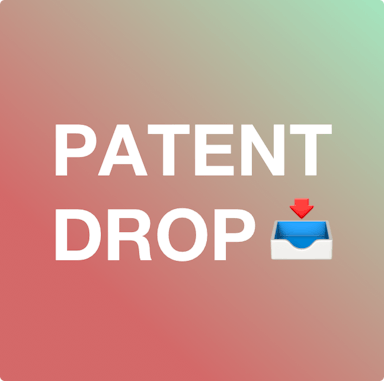IT Director Enterprise Architecture
Chicago, IL (Hybrid)
The American Medical Association (AMA) is the nation's largest professional Association of physicians and a non-profit organization. We are a unifying voice and powerful ally for America's physicians, the patients they care for, and the promise of a healthier nation. To be part of the AMA is to be part of our Mission to promote the art and science of medicine and the betterment of public health.
We continuously work to embed equity in our internal practices and are committed to increasing the diversity of our staff across all levels of the organization. We intentionally work to create the right conditions to enable our employees to feel that they can be their authentic selves and fully participate in the life of the enterprise.
We encourage and support professional development for our employees, and we are dedicated to social responsibility. We invite you to learn more about us and we look forward to getting to know you.
We have an opportunity at our corporate offices in Chicago for an IT Director Enterprise Architecture on our Information Technology team. This is a hybrid position reporting into our Chicago, IL office, requiring 2 days a week in the office.
As an IT Director Enterprise Architecture oversee activities includes helping the organization achieve targeted business outcomes related to growing revenue, optimizing costs, mitigating risks, and improving sustainability. Focus on development of the business and IT strategy and enterprise architecture of the organization. Facilitate alignment between business and IT, and across the federated IT landscape through engagement of business and IT stakeholders, building and maintaining relationships. Adapt to changing business and operating models while also analyzing trends and disruptions and assessing their impact on targeted business outcomes. Create narratives to visualize the future state and trigger long-term planning. Support various operating models such as project-centric and product-centric. Communicate the value of enterprise architecture, and its portfolio of services while driving the evolution of enterprise architecture services and operating models.
RESPONSIBILITIES:
Formulation of Enterprise Architecture Strategy and Guides
- Provide perspective on the readiness of the organization to change and innovate through scenario planning techniques and supports formulation of business strategy.
- Uss planning-driven, design-driven, and learning-driven approaches to construct future- and current-state business models.
- Facilitates business and IT alignment, connecting strategy to execution, through a collaborative, supportive, and consultative manner, driving the organization’s digital business strategies and balancing innovation and growth.
- Translate and guides execution of business strategy to achieve the organization’s targeted business outcomes by leading the development of an implementation roadmap for the enterprise architecture.
- Construct technology-enabled business and operating models and provide viable options and visibility into execution issues.
- Present gap analyses and/or IT investment roadmaps that reflect the status of the existing IT and federated IT landscape, namely, its ability to contribute to future-state business capabilities around ecosystems and digital platforms.
- Develop and applies minimal viable architectures, which can include a set of standards, reference architecture patterns, principles, and guardrails, through the enterprise architecture governance model, which is informed by the business strategy and corporate governance.
Builds and Maintains Relationships with Critical Enterprise Stakeholders
- Build the enterprise architecture value proposition, contributing to positioning the practice as an internal management consultancy, offering services and skills to support the development and execution of business strategy.
- Develop a portfolio of consulting services designed to meet business and stakeholder needs and deliver agile and time-boxed.
- Determine the relationship between people, processes, information, technology, and other components of the enterprise operating model and their relationships to one another and the external environment.
- Provides consultative advice, adapted to stakeholder context, to business leaders and organizational stakeholders who seek actionable recommendations to make investment decisions about their organization's next business and operating model, using technology to make that change happen.
- Lead and facilitates interaction with business leaders, product managers, and product owners in a business-driven conversation over the risks and implications of the product decision to the line of business, business unit, and greater enterprise.
- Collaborate with infrastructure teams to ensure consistency with the enterprise architecture and identify when it is necessary to modify the enterprise architecture.
- Develop and maintains diagnostic and action-oriented deliverables that help guide investment decisions and longer-term planning, including, but not limited to, technology inventories, roadmaps, architectural diagrams, and enterprise architecture guiding principles.
- Lead analysis of the business’ future-state capabilities and both current and future IT and federated environments to detect critical gaps and opportunities and recommend solutions for improvement to drive the business toward its targeted outcomes.
- Identify organizational requirements for the resources, structures, and cultural changes necessary to support the enterprise architecture practice.
- Work with the CIO, IT leaders, and federated IT leaders to find the right enterprise architecture organizational design to drive business-outcomes.
- Ensure that the enterprise architecture organizational design process leads to a more efficient and effective business and IT operating model, significantly improved results (e.g., profitability, customer service, internal operations), and enterprise architecture resources are empowered and committed to the integration of business and IT.
- Ensure staff deliver high-quality, work on time and within budget parameters with published metrics.
- Assess disruptive forces affecting the organization and identify technology-enabled innovation opportunities that enable business strategy.
- Contextualize trends based on technological, political, economic, social/cultural, trust/ethics, regulatory/legal, and environmental (TPESTRE) trends to enhance their strategic decision making.
- Scan emerging technologies and the business ecosystem for major disruptive technology and nontechnology trends (trendspotting) that affect business.
- Provide practical advice and best practices to take advantage of new, or emerging, opportunities and successfully deliver the expected business outcomes.
- Collaborate with both product and delivery teams to ensure consistency with the enterprise architecture, as well as to leverage shared technologies, tools, and processes that impact speed to value and time to market.
May include other responsibilities as assigned
REQUIREMENTS:
1. Bachelor’s degree in business, computer science, computer engineering, electrical engineering, system analysis, or a related field of study, or equivalent experience required.
The American Medical Association is located at 330 N. Wabash Avenue, Chicago, IL 60611 and is convenient to all public transportation in Chicago.
We are an equal opportunity employer, committed to diversity in our workforce. All qualified applicants will receive consideration for employment. As an EOE/AA employer, the American Medical Association will not discriminate in its employment practices due to an applicant’s race, color, religion, sex, age, national origin, sexual orientation, gender identity and veteran or disability status.
THE AMA IS COMMITTED TO IMPROVING THE HEALTH OF THE NATION
The AMA Mission is to promote the art and science of medicine and the betterment of public health. We are an equal opportunity employer, committed to diversity in our workforce. All qualified applicants will receive consideration for employment...
15 jobsSubscribe to Rise newsletter
Career Copilot
you, just ask me below!






